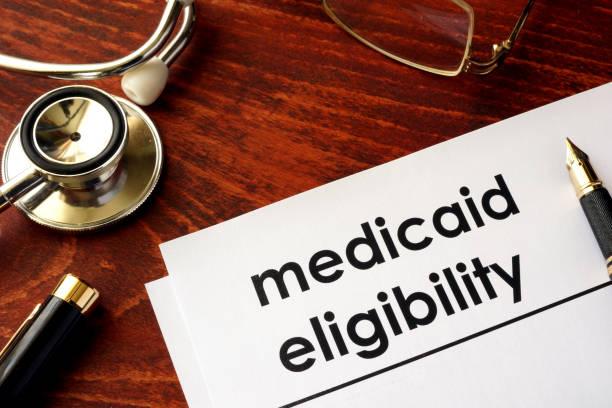Sunita Sohrabji
As it aims for a leaner budget, the incoming Trump administration may cut or eliminate several federal health safety nets, including Medicaid, the Children’s Health Insurance Program, and the Supplemental Nutritional Assistance Program.
These three critical lifelines alone support 88 million low income residents in the US. Almost half of all children living in the US — about 40 million — are enrolled in the Children’s Health Insurance Program, known as CHIP.
More than 34% of people under age 65 identifying as Latino are covered by Medicaid. 39% of Black people are covered by Medicaid, as are 35% of Native Hawaiian Pacific Islanders. Roughly 28% of Asian Americans under 65 are also covered by Medicaid, according to data from Health and Human Services’ Office of Minority Health.
No Cuts to Social Security, Promises Trump
On the campaign trail, President-elect Donald Trump promised not to cut Social Security or Medicare, which primarily serves people over 65. But Trump made little mention of Medicaid, which provides health insurance to low-income adults and children via CHIP.
Medicaid is the largest source of federal funds coming into state budgets, and accounts for an average of 56% of a state’s budget. “So if we do see big cuts to Medicaid, that will affect all areas of states’ budget, not just their health budget,” said Joan Alker, Executive Director of the Center for Children and Families and Research Professor at the Georgetown McCourt School of Public Policy Foundation.
Early Budget Resolution
Alker spoke at a Dec. 6 news briefing organized by Ethnic Media Services. Other speakers included Mayra Alvarez, President of the Children’s Partnership, who discussed the impact of federal cuts to children. Richard Kogan, Senior Fellow at the Center on Budget and Policy Priorities, discussed impoundment, a little-used process the President could use to simply stop the flow of funds allocated by Congress.
Cuts to Medicaid could happen even before President-elect Donald Trump takes office, explained Alker, explaining that a new, Republican-controlled House and Senate will likely hit the ground running on a budget resolution in January. Large cuts to Medicaid would create serious problems for state governments who would not be able to fill in the gap, she said, noting that such cuts would have a deep impact on America’s aging population.
The cuts will be back-loaded to play out over a 10-year period, noted the researcher. “Congress is usually very good at thinking about ways to structure these kinds of cuts so that the pain is not immediately felt.”
New Red Tape
New red tape is likely to be added, delaying enrollment for eligible people and their children. Health care providers who see a lot of low-wage workers, particularly those in rural communities could very likely face cuts in reimbursement, said Alker. “These cuts will be very hard for providers to absorb. So all of these different groups — children, seniors, people with disabilities, low-wage workers — will be put at risk if we see substantial cuts to Medicaid,” she said.
Medicaid is very popular with voters, polling right behind Medicare, one of the federal government’s most popular programs. “Voters don’t want to see big cuts to Medicaid. This election was about cost concerns that families have, and they certainly don’t want to be paying more health care costs,” said Alker.
Project 2025
Several of the proposals in Project 2025 — expected to be Trump’s playbook for his 2nd term in office — would cause irreparable harm to the health and well-being of children, said Alvarez of the Children’s Partnership.
“Children absolutely need healthcare services and the security that coverage like Medicaid or Medi-Cal in California provides. But they also require a safety net and access to services that include nutrition, economic supports, and more,” she said, noting that the Children’s Health Insurance Program, the Supplemental Nutrition Assistance Program, Temporary Assistance for Needy Families, and even school lunch programs are at risk for being cut or eliminated.
SNAP, also known as food stamps, provides support to 40 million people. “It’s our nation’s first line of defense against hunger,” said Alvarez, adding that the incoming administration has proposed $4 billion in cuts to the program over 5 years. “This is at a time when grocery prices have increased 24% between 2020 and 2023, and wages have not increased proportionately,” she said.
Public Charge
The Trump administration will likely end the Low Income Home Energy Assistance Program, also known as LIHEAP, which assists low-income families with their energy bills, said Alvarez. She also expressed concern that funding for the Women, Infants, and Children program — WIC — would be reduced.
Families eligible for federal health support are likely to dis-enroll themselves, as they did with Trump’s 1st administration, for fear of the public charge rule, said Alvarez. Trump attempted to invoke public charge during his first term, threatening to deny adjustment of immigration status, if the applicant had availed of federal benefits. He created a chilling effect in the immigrant community, said Alvarez.
Impoundment is Unconstitutional
Kogan of CBPP explained another seldom-used process known as impoundment, which allows the President to simply stop the flow of funds already approved by Congress. He stated that impoundment is unconstitutional.
Trump hinted at his intent to use impoundment during several campaign rallies. “We’re going to bring back presidential impoundment authority, which nobody knows what it is. But it allows the president to go out and cut things and save a fortune for our country,” he said, as reported by NPR.
Kogan first began researching the legalities of impoundment 52 years ago, as former President Richard Nixon used the process to deny funds to social welfare programs. Nixon faced nine lawsuits and lost all of them. In 1974, Congress approved the Impoundment Control Act, attempting to limit similar presidential actions.
President Must Obey Congress
“Much of the public discussion of impoundment is very confused or often just plain wrong,” said Kogan. “The key takeaway is that presidents have never had the general authority to impound funding enacted into law by Congress, and Congress couldn’t even grant such authority to the president if it wanted to.”
“First, the US Constitution does not grant the president the right to impound funds. It is just the opposite. The Constitution says that Congress decides what to spend money on and how much, and that the president’s job is to ‘take care that the laws be faithfully executed.’” he said.
In 1996, Congress approved the Line Item Veto Act, which gave Presidents the authority to make selective vetoes of line items within appropriations bills. A line item veto, effectively an impoundment, would go into effect unless Congress wrote a new law to forbid it. But the Supreme Court ruled 6-3 that the Act was unconstitutional.
“I worry about the types of cuts that Congress might make, taking away or reducing health care, food assistance, education aid, or housing support for some or tens of millions of people. But it is Congress’s job to write the budget laws and the President’s job to faithfully follow those budget laws. This is not optional,” said Kogan.






